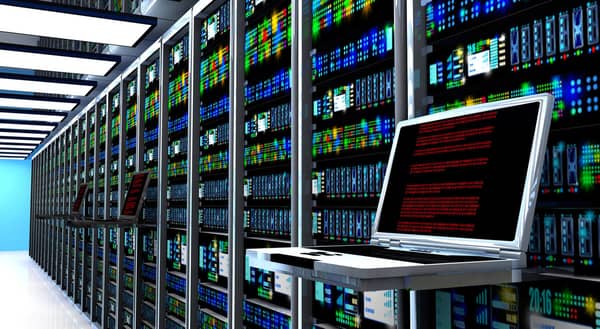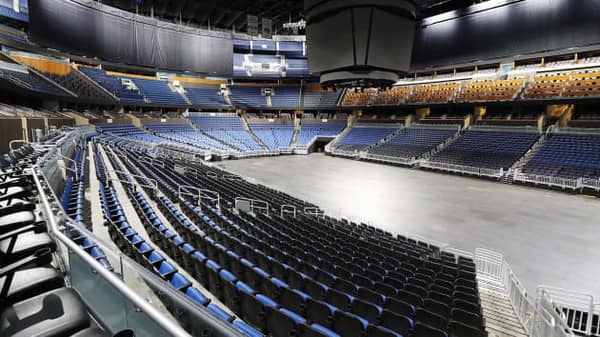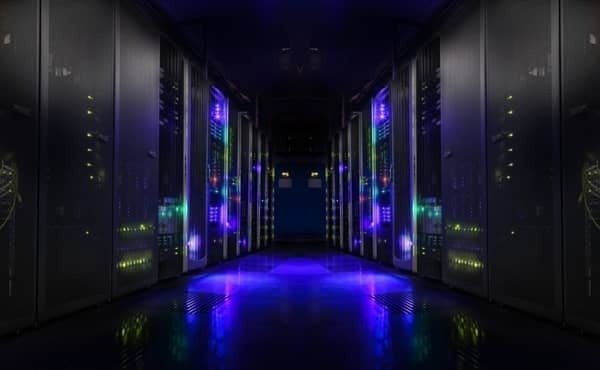
What Is Advanced Data Center Circuit Metering?
September 18, 2020
The Technology behind Virtual Sports Fans
October 20, 2020Data centers are going dark but in a good way. I’m not talking about power failures or anything along those lines. We’re discussing how remote management and near 100% remote management may be the future of data center operations. This continues to be discussed by data center experts and has been for the past decade, but we are getting closer to having this become a reality.
The pandemic has forced many data center operations to use skeleton crews to keep operations running. Because social distancing has forced data centers to cut staff to little or no on-site personnel—it has also pushed the industry to find better solutions for improved and more hi-tech monitoring and management tools. The autonomous data center seems running 100% “lights out” maybe a lot closer than we think.
Since the beginning of mainframe computers, data centers were designed to contain and use human operators. Everything from location, aisle layouts, and the height of the server racks all had a human operator in mind. A fully automated, “lights out” data center can be built differently relying on off-site monitoring and autonomous robots to manage operations. Artificial intelligent technology will be one of the driving forces in making a “lights out” data center a reality.

Photo Source: techiexpert
Artificial intelligence in the data center
Harnessing the power of artificial intelligence will be what makes a “lights out” data center work. The innovations and improvements to artificial intelligence have made processing and analyzing data better than ever before, and organizations are seeing benefits of this in their daily operations. Why is artificial intelligence a good match for the data center?
It will help data centers conserve energy. Data centers use a lot of energy to run all of the servers and to keep these servers from overheating. These advanced cooling systems require a tremendous amount of energy. These servers are also what powers the world’s internet, which is why it uses so much energy and as much CO2 as the airline industry. Artificial intelligence optimizes the system by learning and managing temperature, flowrates, and evaluates how the system is keeping the servers cool.
Besides conserving energy, it will also reduce downtime, optimize world load distribution, and improve security. There are many reasons why artificial intelligence in the data center makes sense, but where the innovation is most interesting is the idea of completely unmanned “lights out” data centers.

Photo Source: datacenterfrontier
The “Lights out” Data Center
The current pandemic continues to be a problem, but it is also forcing many industries to adapt to a new normal. Automation plays a big role in the artificial intelligence world. Most people are looking to use technology to make life easier and more convenient. Automation is used in everyday life. Our thermostats (even the older ones) are all programmed to the temperature of our liking. Most households pick a comfortable temperature and leave it for the season. Our bills can be automated and scheduled to be paid directly from our accounts. Our freezer also has a built-in ice maker that makes ice and stops when the tray is full. There are many different ways we use automation in our everyday life. These are just a few examples of it. Can you think of more?
Automation can also be used in data center operations. Everything within a data center can be scheduled, monitored, and maintained by automation. Not only will this save manpower, but it will also make the system more efficient by machine learning.

Photo Source: forbes
What Is a Machine Learning Data Center?
Machine learning is part of artificial intelligence that teaches a computer system to predict how the system is working and makes the right decisions to keep it working properly.
As a part of artificial intelligence, machine learning will change how data centers are managed. Machine learning will be able to analyze the efficiency of the system. Again, the biggest part of machine learning is the idea of learning how the system is working and adapting and making the best decisions to be more efficient. Until this technology, data center operators had a lot on their plate. They had to worry about many different things, and even experts made mistakes due to human error. This will all be taken care of by artificial intelligence and machine learning in a “lights out” data center.
AI and machine learning can plan for the future. Data center managers need to plan what they might need in the future. In a “lights out” data center, capacity planning will take into account power, cooling, space, and IT resources needed for operation growth.
Analyzing future risks will also be taken care of by data center artificial intelligence and machine learning. Because these AI systems are already monitoring and handling all of these aspects, it will also be aware of current and future risks. It will also be aware of what will be needed when it comes to budget and equipment.

Photo Source: dreamstime
What Does the Future Look like for A “Lights out” Data Center?
The future of the “lights out” data center, believe it or not, actually looks bright. Virtualization and a software-defined data center are already being implemented by many data centers. Network virtualization combines physical networking equipment and makes it accessible in one software-based resource. It divides available bandwidth, and the channels can be assigned to specific servers and devices as well. Server virtualization allows multiple virtual machines to be run on one physical server. This allows the system to take full advantage of the server power. And lastly, storage virtualization groups multiple physical storages into one single device making it easier to manage.
Software-defined data centers make it easy to automate data center systems. Automated “lights out” data centers are becoming closer than ever before. We are seeing many different aspects of data centers being managed off-site by personnel. But we are getting even closer to a completely unmanned data center. There will need to be more advancements in robotics, but the future looks bright for a “lights out” data center.

